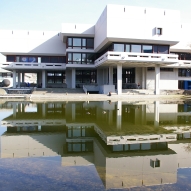Alternative Links zum Volltext:DOI
Zusammenfassung
The capability of the MSA-NRTL model to describe heat effects for binary aq. electrolyte and nonelectrolyte solns., with a relatively reduced no. of parameters, is examd. The thermodn. properties described include the osmotic coeff., .vphi., the apparent relative molar enthalpy, ΦL, and the apparent molar heat capacity, ΦCP. The MSA-NRTL model consists of the mean spherical approxn. (MSA) for ...

Nur für Besitzer und Autoren: Kontrollseite des Eintrags



 Altmetric
Altmetric